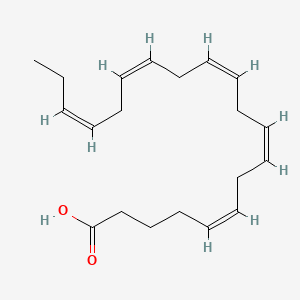| Pakala R et al. |
Thromboxane A2 fails to induce proliferation of smooth muscle cells enriched with eicosapentaenoic acid and docosahexaenoic acid. |
1999 |
Prostaglandins Leukot. Essent. Fatty Acids |
pmid:10397410
|
| Andersen LF et al. |
Evaluation of a food frequency questionnaire with weighed records, fatty acids, and alpha-tocopherol in adipose tissue and serum. |
1999 |
Am. J. Epidemiol. |
pmid:10400557
|
| Murakami K et al. |
Evidence for direct binding of fatty acids and eicosanoids to human peroxisome proliferators-activated receptor alpha. |
1999 |
Biochem. Biophys. Res. Commun. |
pmid:10403814
|
| Løssl K et al. |
The effect of n-3 fatty acids on leukotriene formation from neutrophils in patients on hemodialysis. |
1999 |
Lipids |
pmid:10419143
|
| McCabe AJ et al. |
The effect of eicosapentanoic acid on matrix metalloproteinase gene expression. |
1999 |
Lipids |
pmid:10419155
|
| Li D et al. |
Comparison of n-3 polyunsaturated fatty acids from vegetable oils, meat, and fish in raising platelet eicosapentaenoic acid levels in humans. |
1999 |
Lipids |
pmid:10419187
|
| Pakala R et al. |
Serotonin fails to induce proliferation of endothelial cells preloaded with eicosapentaenoic acid and docosahexaenoic acid. |
1999 |
Atherosclerosis |
pmid:10428304
|
| von Meyenfeldt MF |
Nutritional support during treatment of biliopancreatic malignancy. |
1999 |
Ann. Oncol. |
pmid:10436839
|
| Matsukawa R et al. |
Eicosapentaenoic acid release from the red alga Pachymeniopsis lanceolata by enzymatic degradation. |
1999 |
Appl. Biochem. Biotechnol. |
pmid:10436916
|
| de Deckere EA |
Possible beneficial effect of fish and fish n-3 polyunsaturated fatty acids in breast and colorectal cancer. |
1999 |
Eur. J. Cancer Prev. |
pmid:10443950
|
